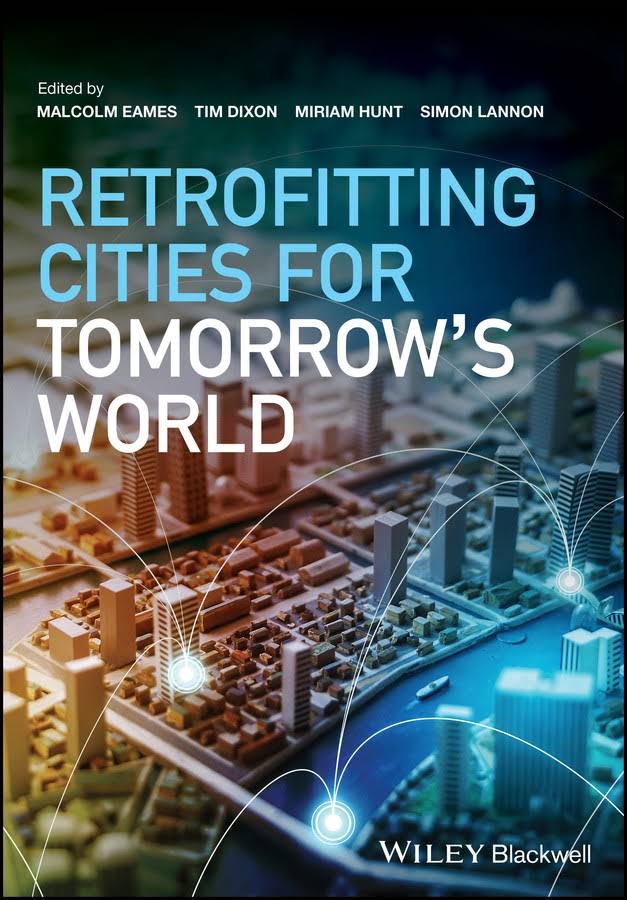Retrofitting Cities for Tomorrow’s World (2017): “What is needed is a new approach, based on futures thinking, which embeds the ideas of ecological and social resilience into the very fabric of the built environment of cities,” says Malcolm Eames, editor
Note to Reader:
Published in 2017, Retrofitting Cities for Tomorrow’s World is described as must-reading for academic researchers, including postgraduates in sustainability, urban planning, environmental studies, economics, among other fields. It is also an important source of fresh ideas and inspiration for town planners, developers, policy advisors, and consultants working within the field of sustainability, energy, and the urban environment.
 “This book identifies the challenges, and illustrates innovative approaches to retrofitting in cities at all scales, from the house and the neighbourhood to the city level. It illustrates the imperative of ‘futures thinking’, of good leadership and governance, and is essential reading for all professionals and communities involved in planning, developing and rebuilding the urban fabric, form and systems.” – Professor Rachel Cooper OBE, Distinguished Professor: Design Management and Policy, Lancaster University
“This book identifies the challenges, and illustrates innovative approaches to retrofitting in cities at all scales, from the house and the neighbourhood to the city level. It illustrates the imperative of ‘futures thinking’, of good leadership and governance, and is essential reading for all professionals and communities involved in planning, developing and rebuilding the urban fabric, form and systems.” – Professor Rachel Cooper OBE, Distinguished Professor: Design Management and Policy, Lancaster University

A groundbreaking exploration of the most promising new ideas for creating the sustainable cities of tomorrow
The culmination of a four-year collaborative research project undertaken by leading United Kingdom universities, in partnership with city authorities, prominent architecture firms, and major international consultants, Retrofitting Cities for Tomorrow’s World explores the theoretical and practical aspects of the transition towards sustainability in the built environment that will occur in the years ahead.
City-Level Action
“The emphasis throughout is on emerging systems innovations and bold new ways of imagining and re-imagining urban retrofitting, set within the context of ‘futures-based’ thinking,” states Dr. Malcolm Eames, one of four co-editors.
“The concept of urban retrofitting has gained prominence within both the research and policy arenas in recent years. While cities are often viewed as a source of environmental stress and resource depletion they are also hubs of learning and innovation offering enormous potential for  scaling up technological responses.
scaling up technological responses.
“But city-level action will require a major shift in thinking and a scaling up of positive responses to climate change and the associated threats of environmental and social degradation. Clearly the time has come for a more coordinated, planned, and strategic approach that will allow cities to transition to a sustainable future.
“This book summarizes many of the best new ideas currently in play on how to achieve those goals,” concludes Malcolm Eames.

